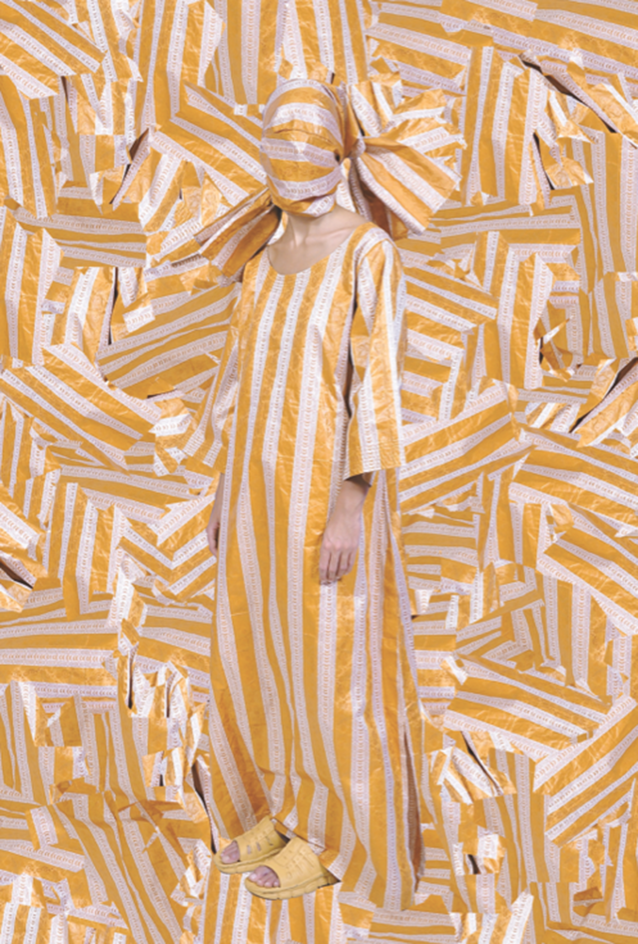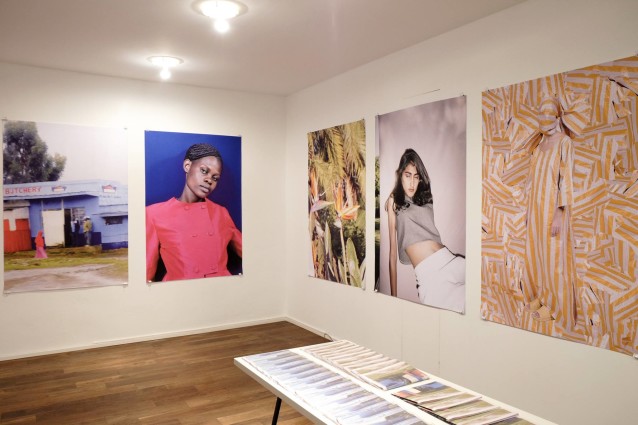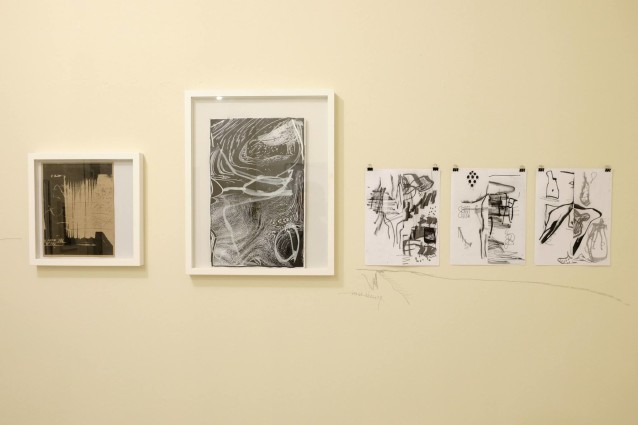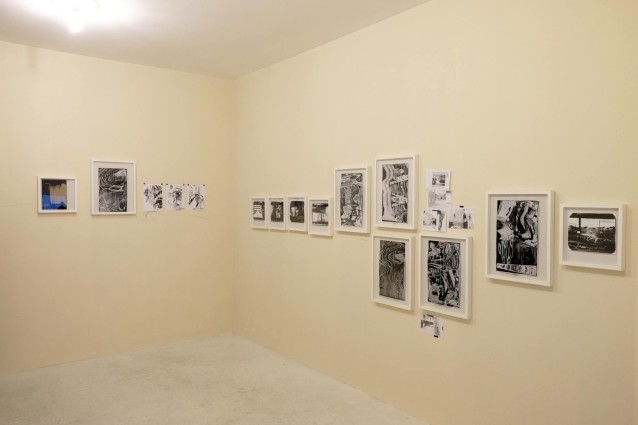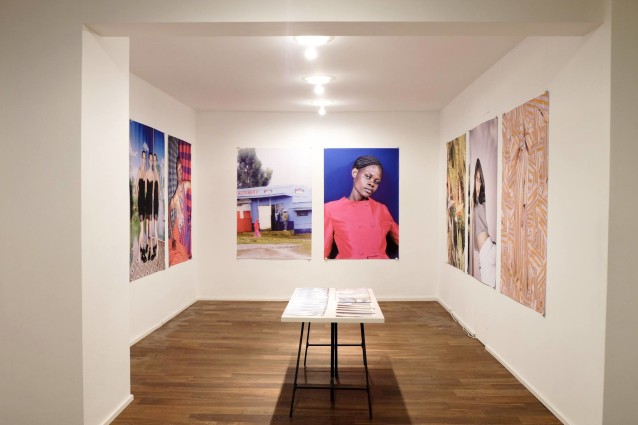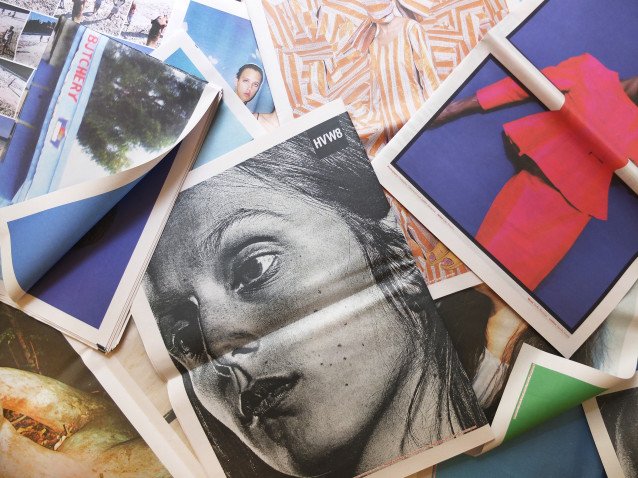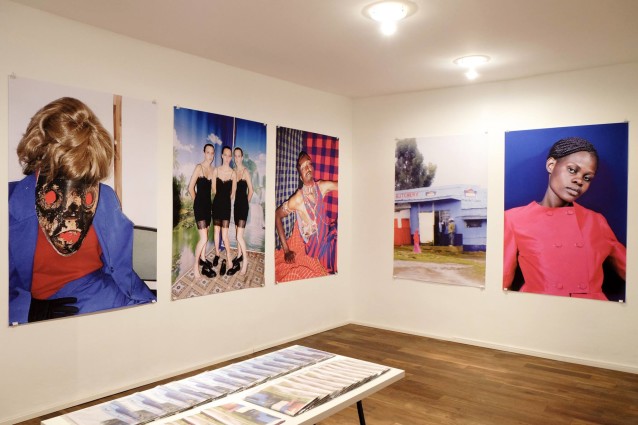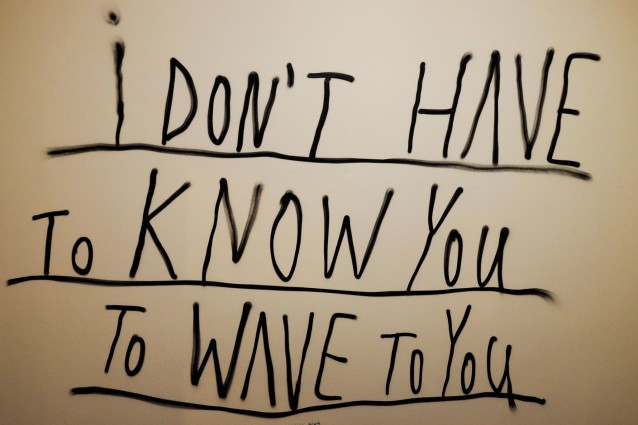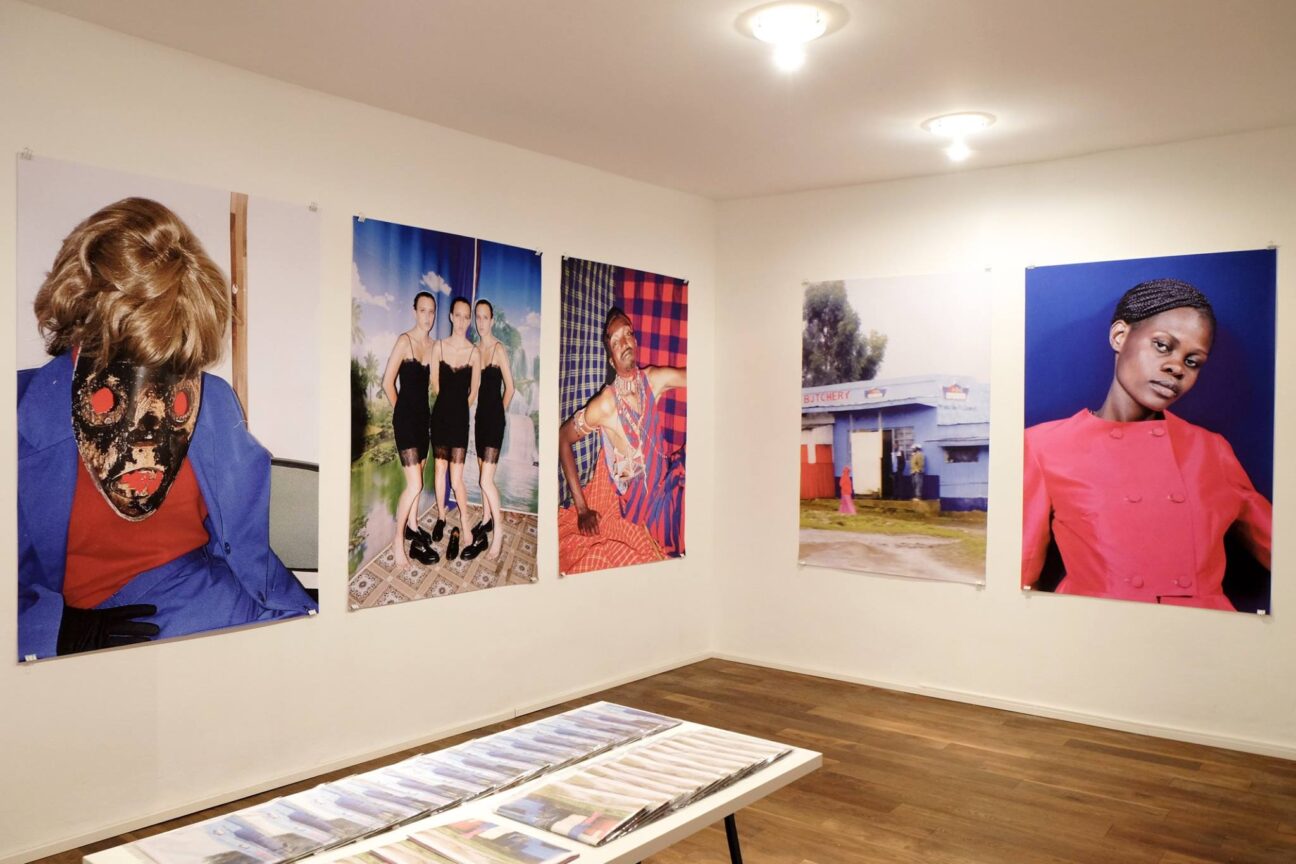
Sergej Vutuc & Rich Jacobs: I don’t have to know you to wave to you, Agathe Zaerpour & Philippine Chaumont: Uzuri-Ubichi – Berlin
Sergej Vutuc & Rich Jacobs: I don’t have to know you to wave to you
Disjunct frames of empty lots, shadowed alleyways, black and white striations etched with ectoplasmic writing fill the pages of a two week collaboration in Oakland between skate dada Sergej Vutuc and “beautiful losers” progenitor Rich Jacobs who have jointly published the zine “I don’t have to know you to wave to you.” The images are highly layered experimentations with darkroom development, obfuscated glances, croppings of urban banality/decrepitude, and confounding plays with double exposure which is made more complex by the materials of presentation. Images are not only physically gouged but also chemically burned, radiated by gesture and process. The act of distress becomes further dislocated from the final frame as each image is scanned, copied, and reproduced repeatedly until the digital artifacts turn grey areas into blackened masses. Resolved images become irresolute vignettes. The result is a flattened material and temporal space. Where the original image, a vestige of the past, is physically assaulted, embodying the presentness of action, and then reproduced ad infinitum.
These images feel like recollections of fractured memories, impressions, and involuntary intuitions that take into account overlapping instances of time. They ignore the documentary nature of photographs and allow for the possibility of subjectivity: the psychological, the experiential, and the interpretive. The experience of a zine is rethought as potentially non-narrative and non-representational in format. Both Rich and Sergej intersect in this preoccupation with the zine and zine-makers, as a sort of reiteration of the flaneur–the idle and sentient observer. Rich Jacobs is known for drawing grotesque and heavy faces that sag and wrinkle with self-awareness on take-out menus which, as he describes, become evidence and abstractions of humanity and himself. It is through daily and routine encounters and occasional fixations with scars and the mundane that come to bear the weight of one’s existence. Like Jacob, Vutuc prioritizes and exhibits scars and their permanence across time as imperfect but primitive evidence of an event, attitude,or state of being.
Sergej and Rich operate on a fundamental Zine mentality. Zines are not only the object itself, but also the sociological processes and unifying ethoses that lead to its production. It manifests from the reckless and autonomous spirit of DIY cultures–punks, skaters, anarchists. It emerges from the ad-hoc, necessity of using the urban scrap at hand as way of putting hammer-to-nail, board -to-pavement, thought to paper, and eventually, reformation. Most centrally, zines are immediate and loose relationships between all of its collaborators, author and viewer and its periphery. I don’t have to know you to wave to you.
Sergej Vutuc is an artist, musician, and skater working and living in Berlin, Germany. He’s a prolific publisher and organizer of zines and zine cultures. He has recently exhibited at the this year’s LA Art Book fair. Rich Jacobs is an artist and skater working and living in Oakland, California. Known for his earnest investment in alt communities his art and surrounding group of friends have unknowingly come to represent what wikipedia calls “The Mission School.” I don’t have to know you to wave to you is their first collaborative exhibition at HVW8.

image by Sergej Vutuc & Rich Jacobs
Agathe Zaerpour & Philippine Chaumont: Uzuri-Ubichi
“We met Kylie, sixteen years old, student in Mombasa, on Nyali Beach, and asked her about what she liked to wear on the beach. She is keen on smart dresses, even on the sand, and doesn’t understand why everyone, especially the tourists, seem to think they can wear very casual and short clothes just because they are not in the street…”
Kylie is one of many people that Agathe and Philippine have met on their dissertational trip to Kenya which began as a project to record the region’s fashion. After a series of transnational political pressures, the scope widened to include investigations of Indian diaspora, second hand markets, textile recycling, and the web of economies and local practices that lineate from it. This is symptomatic of the inevitable challenges in attempting to apprehend the culturally hybrid, politically complex, and relentlessly ubiquitous landscape of Kenyan fashion. This is the sort of incongruity in cultural convention that Kylie speaks to as she explains her choice for wearing a dress on the beach.
At times their photographic subjects are postured, model centralized and foregrounded by the white sands of the Swahili Coast and backgrounded by horizon lines of ocean and sky. Other photos are digitally tampered and defiantly composited. Herein lies the duality that drives the project:: presentational artifice of fashion and its miring in geopolitical realities. Uzuri-Ubichi is an ongoing project concerned with cataloguing, archiving, and resurfacing histories of fashion and its enveloping visual culture.
Their investigation veers into the ethnographic, sometimes beginning with an interview with a Nairobi-based Indian designer and then following the various strains and tangents of style and influence. Their staging can be uncanny flash photography of indigenous totems and at times highly produced top-gloss studio shoots. Plaids, zebras, checks, color-blocked solids, dyes, metallics, and batiks adorn, overwhelm, sometimes efface their wearers. In a way, the simultaneous and ambivalent presence of this surfeit of surface pattern are demonstrative of the contending and cooperating commerces that materialize in the dress and urban vernacular of its people.
Though Agathe and Philippine continue to visit and document Kenyan fashion, their aim is not to be solely historicizing. There is a persistent effort to maintain and distill the conceptual core of Uzuri-Ubichi, which translates into “Beauty-Rawness” in Swahili. It is a persistent and evolving fascination with the “ambivalence between fashion and report.” Fashion as information and the broader symbiosis of aesthetics and context.
Philippine was born in Martinique and grew up in West Africa. She graduated from high school in Ouagadougou, Burkina Faso, in 2008 and then left Africa to start studying fashion at Duperre, Paris and Visual Communication at Estienne, Paris. Agathe was born in Lausanne from a Swiss mother and an Iranian father. She graduated from High School in Lausanne in 2009 and then studied graphic design at Ecal where she met Philippine. Agathe and Philippine graduated with a bachelors’ in graphic design in 2014 from Switzerland’s Ecal. Uzuri-Ubichi is their first exhibition at HVW8 and Diploma project in Bachelor Graphic Design of ECAL/University of Art and Design Lausanne, 2014

